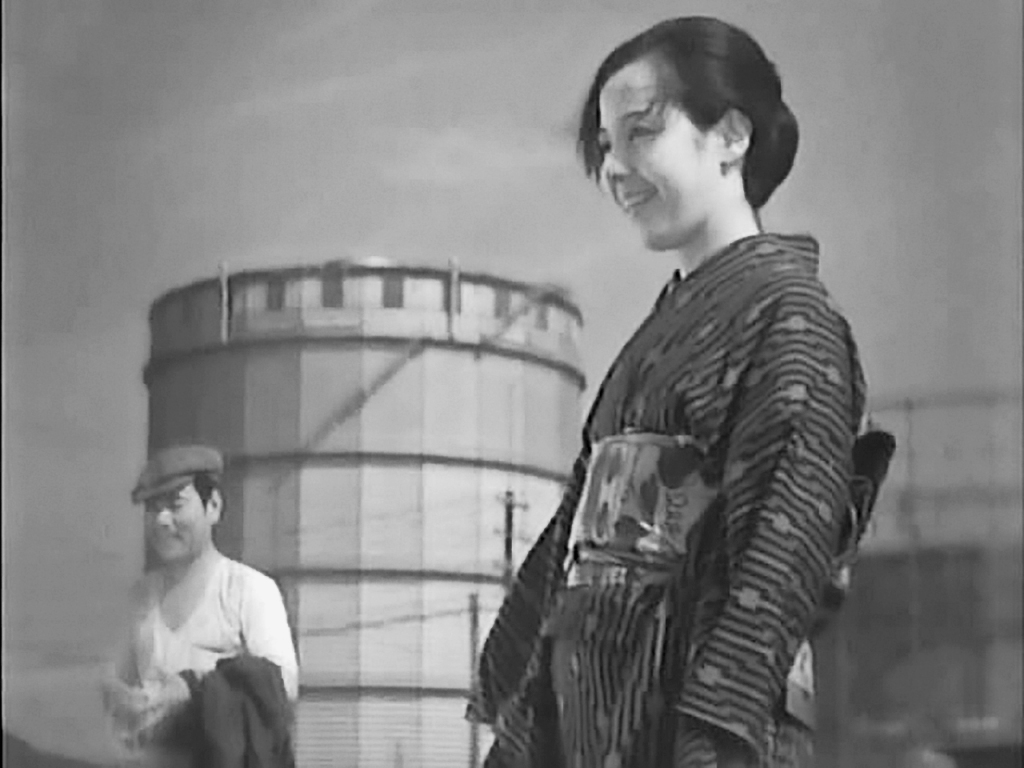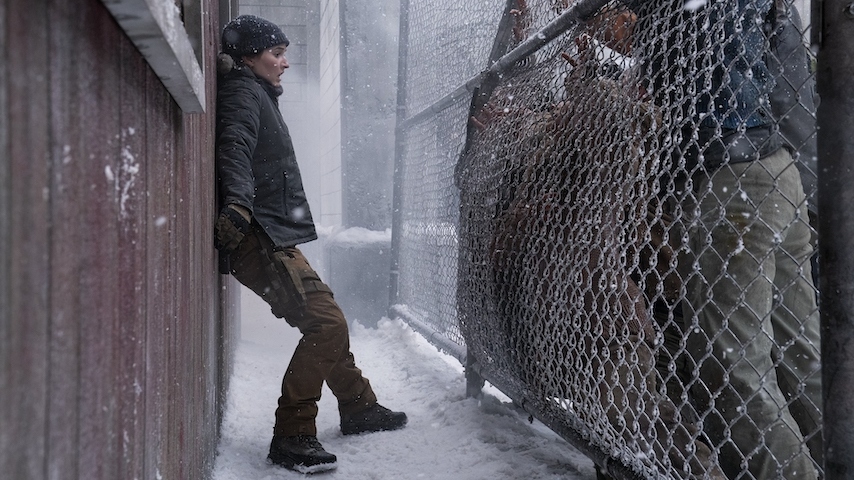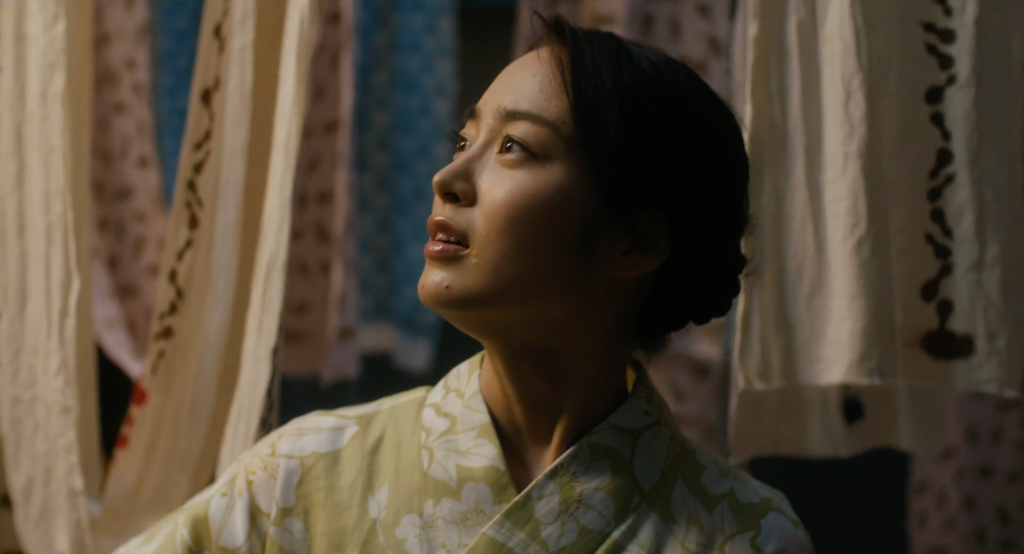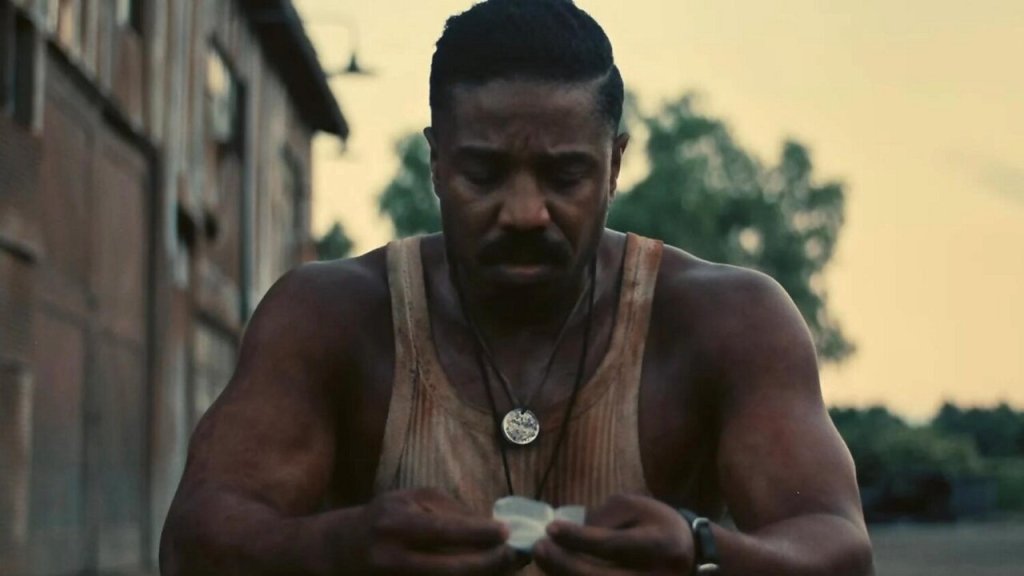Ozu Yasujiro, widely regarded as the greatest of all Japanese film directors, making some 55 features between 1927 and 1962. He started his career making silent comedies, and ended it making dramas in colour. His 1953 drama Tokyo Story is commonly cited as one of the best – if not the best – narrative features ever made.
An Inn in Tokyo is a silent drama released in 1935. It was the second-last silent film he directed, and since his subsequent film College is a Nice Place (1936) has been lost (likely a victim of the 1945 firebombing of Tokyo) it stands as the most recent example of his silent work audiences can see. The film follows Kihachi (Sakamoto Takeshi), an unemployed labourer wandering the outskirts of Tokyo looking for work. Accompanying him are his young sons Zenko (Kozo Tokkan) and Masako (Suematsu Takayuki), who help make ends meet by catching stray dogs and delivering them to the local authorities for rabies vaccination. When Kihachi meets the similarly unemployed Otaka (Okada Yoshiko), he is immediately enchanted, and grows concerned for both her welfare and that of her daughter Kimiko (Ojima Kazuko).
Kihachi, played by Sakamoto, is a pre-existing character from Ozu’s earlier film Passing Fancy (1933), although it would seem inaccurate to describe An Inn in Tokyo as a sequel, per se. The film’s story of unemployment and poverty reflects the dire state of the Japanese economy at the time. Like many countries Japan was badly affected by the global economic depression, but by 1935 was in a recovery phase thanks to a combination of high growth and government policy. Unemployment, however, remained stubbornly high; the associated struggles, and its impact on children, forms the core of Ozu’s film here (written, ironically enough, because the famed writer/director was short on cash).
There is a definite charm to the film, particularly when it comes to the brothers Zenko and Masako. They suffer hunger and a lack of shelter with a surprising resolve, yet Ozu is quick to infuse them with a familiar immaturity. When they briefly come into some money, they could spend it on food and housing, but instead use it to purchase a rather fetching cap that they proudly share while going hungry. A running joke sees them poking their tongues out every time they meet the young girl Kimiko. They are a valuable source of humour for the film, which would otherwise risk becoming too maudlin and dour, and in many ways they prefigure the juvenile leads of Ozu’s much later (and delightful) comedy Good Morning (1959).
Ozu spent his entire career working to his own personal set of filmmaking rules – his relatively unique approach to the 180 degree rule is well known, as is his preference from shooting scenes from a comparatively low angle – and his silent works are no exception. In particular he has a somewhat unconventional approach to framing intertitles, making the assumption that audiences will immediately understand by context which character is saying which dialogue. In practice this means that when dialogue is displayed onscreen, it does not need to be sandwiched by shots of the character delivering the line; Ozu can instead focus his camera on the other character reacting. It is a small change to the typical silent film visual language, but it manages to make An Inn in Tokyo feel a lot more recent than it actually is.
There is warmth and heart in Ozu’s film, coupled with strong performances and crisp, enjoyable storytelling. Often the comparatively primitive nature of silent film makes it a tough sell for 21st century viewers. In this case it does not prove a challenge at all. In all honesty it is part of the pleasure.





Leave a comment